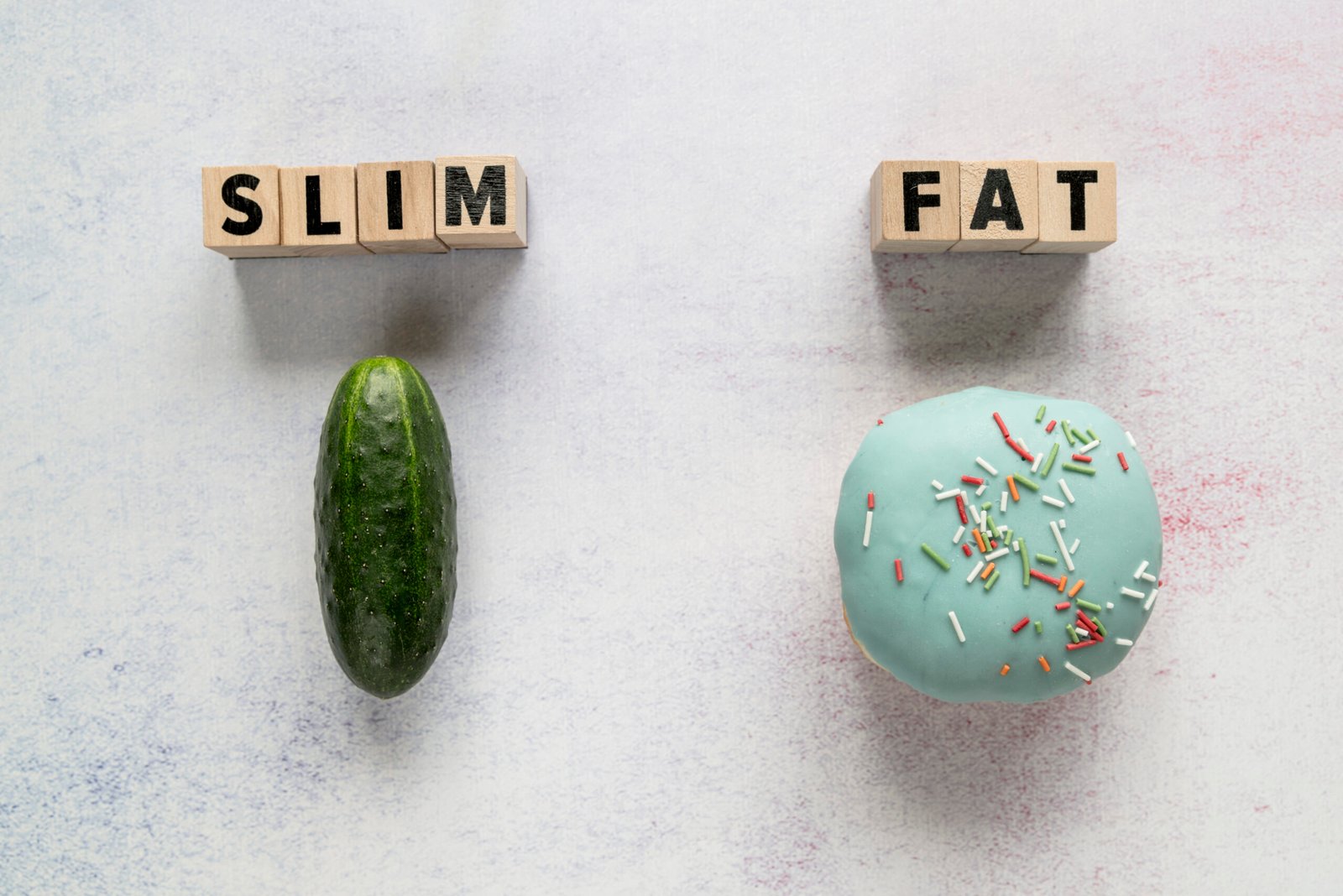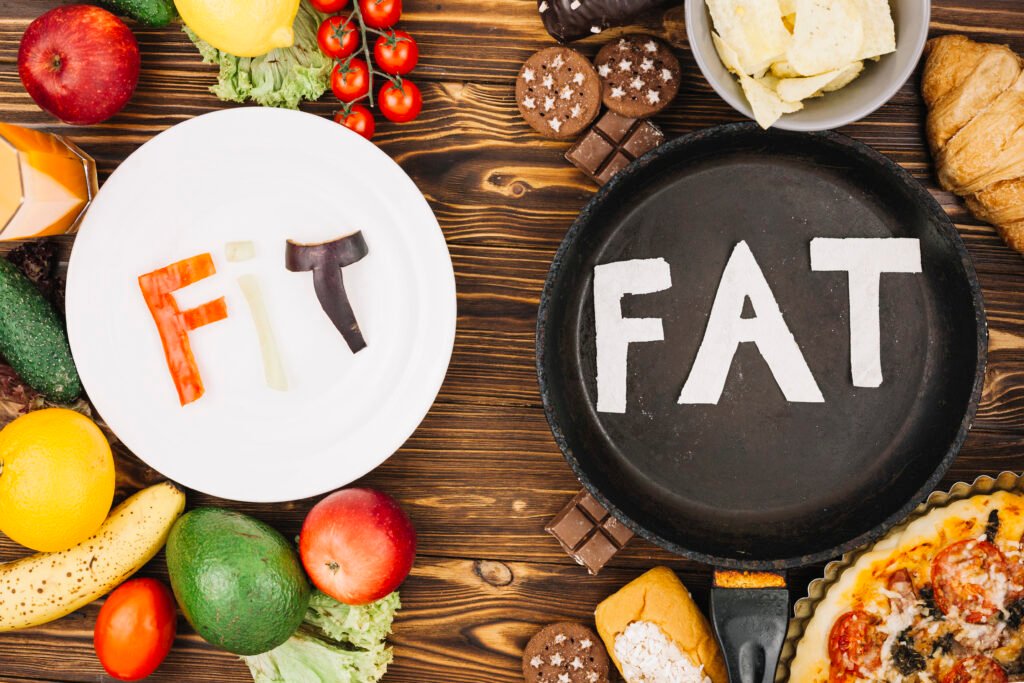Now Reading: Weight Loss vs Fat Loss: 6 Key Differences You Need to Know
-
01
Weight Loss vs Fat Loss: 6 Key Differences You Need to Know
Weight Loss vs Fat Loss: 6 Key Differences You Need to Know

Weight Loss vs Fat Loss: Why Knowing the Difference Can Transform Your Fitness Journey
When it comes to fitness goals, weight loss and fat loss are two terms often used interchangeably. But here’s the truth: they’re not the same thing—and understanding the difference can be a game changer for your health.
Most people set goals like, “I want to lose 10 kilos” or “I need to drop two dress sizes” without realizing that the method they choose might burn away muscle, lower their metabolism, or even make it harder to keep the weight off.
If your goal is to look fit, feel strong, and be healthy for the long run, you need to aim for fat loss, not just weight loss. Let’s break down the difference, explore why it matters, and learn how to get results the right way.
What Is Weight Loss?
Weight loss simply means a reduction in your total body weight. This includes:
- Fat mass (stored fat in your body)
- Muscle mass (lean tissue you actually want to keep)
- Water weight (temporary changes in fluid retention)
- Even bone density in extreme cases
Most people track weight loss using a bathroom scale. While the number going down might feel motivating, it doesn’t tell you what you’ve actually lost.
The problem with chasing weight loss alone:
- You might lose muscle, which lowers metabolism and makes it easier to regain fat.
- Water loss from sweating, low-carb diets, or dehydration can make you think you’re making progress when you’re not actually burning fat.
- Crash diets can cause fast weight loss but at the cost of health and energy.
💡 Example:
You do a strict crash diet and lose 5 kg in two weeks. But after the first month, you gain it all back—because most of it was water and muscle, not fat.
What Is Fat Loss?
Fat loss means reducing only your body fat percentage while preserving as much muscle mass as possible. This is the type of loss that leads to:
- A leaner, more toned look
- Better metabolic health
- More strength and energy
- Easier long-term weight maintenance
You measure fat loss by:
- Body fat percentage tests (bioelectrical impedance, calipers, DEXA scans)
- Progress photos
- Body measurements (waist, hips, arms, thighs)
Unlike weight loss, fat loss focuses on improving body composition—the ratio of fat mass to lean mass in your body.
Weight Loss vs Fat Loss: What’s the Difference?
Two people can weigh the same, but the one with a lower body fat percentage will look leaner, healthier, and more athletic.
Weight Loss vs Fat Loss: The Key Differences
| Category | Weight Loss | Fat Loss |
| Focus | Overall body mass | Body fat percentage |
| Includes | Water, muscle, fat, etc. | Primarily body fat |
| Measured by | Scale weight | Body fat % or measurements |
| Goal | Lower number on the scale | Better body composition |
| Risk | Muscle loss, yo-yo dieting | Slow, sustainable, healthier results |
Why the Difference Matters for Your Health
Losing fat while keeping muscle is the gold standard for long-term health. Here’s why:
- Better Metabolism – Muscle burns more calories at rest than fat. Losing muscle during weight loss slows down your calorie burn, making it harder to maintain results.
- Improved Strength & Function – Muscle helps with daily activities, posture, and injury prevention.
- More Sustainable Results – Fat loss happens slower than weight loss, but it’s more likely to last.
- Healthier Hormones – Crash dieting and extreme weight loss can disrupt hormones like leptin and cortisol, making you feel hungrier and more tired.
- Better Appearance – Fat loss reveals muscle tone, giving a more defined and athletic look.
The Science Behind Fat Loss
Fat loss happens when you create a calorie deficit—burning more calories than you consume—while supporting your body with enough protein and resistance training to preserve muscle.
When you diet without exercise or eat too little protein:
- Your body uses muscle tissue for energy.
- Your resting metabolic rate drops.
- You become more prone to fat regain.
- When you aim for fat loss the right way:
- You burn stored fat for energy.
- You keep or even build muscle.
- You maintain a higher metabolism.
How to Focus on Fat Loss Instead of Just Weight Loss
1. Prioritize Strength Training
Lifting weights or doing resistance exercises signals your body to keep muscle while burning fat. Aim for 3–4 strength workouts per week targeting all major muscle groups.
2. Eat Enough Protein
Protein helps preserve lean tissue, supports muscle repair, and keeps you fuller for longer.
- Target: 1.6–2.2g protein per kg of body weight per day.
- Sources: eggs, chicken, fish, tofu, lentils, Greek yogurt.
3. Include Cardio—but Not Excessively
Cardio helps burn calories, but overdoing it can lead to muscle loss. Mix moderate-intensity cardio (brisk walking, cycling) with high-intensity interval training (HIIT).
4. Avoid Crash Diets
Extreme calorie cuts cause quick weight loss but often strip away muscle and water. Instead, aim for a slow, steady deficit of 300–500 calories per day for sustainable fat loss.
5. Get Quality Sleep
Poor sleep disrupts hormones that regulate hunger and fat storage. Aim for 7–9 hours per night.
6. Track the Right Metrics
Instead of obsessing over the scale:
- Take weekly progress photos
- Measure waist, hips, thighs, arms
- Monitor energy levels and strength gains
Common Myths About Fat Loss
- “If the scale goes down, I’m losing fat.”
Not always—water and muscle loss can cause drops on the scale without actual fat reduction. - “You can spot-reduce fat.”
Targeted fat loss in one area isn’t possible. You can strengthen specific muscles, but fat loss happens across the whole body. - “Eating less is always better.”
Too few calories can slow metabolism and lead to muscle loss. - “More cardio means more fat loss.”
Cardio helps, but without resistance training, you risk losing muscle.
Real-Life Example
Imagine two people both lose 5 kg in 8 weeks:
- Person A does only cardio and eats too few calories. Result: loses 3 kg muscle, 2 kg fat, looks “smaller” but not more toned, and regains weight quickly.
- Person B lifts weights, eats enough protein, and follows a moderate calorie deficit. Result: loses 5 kg of fat, keeps muscle, looks leaner, and maintains the results.
Who would you rather be?
The number on the scale is just one piece of the puzzle. If you want to look better, feel stronger, and improve your health, your goal should be fat loss—not just weight loss.
By focusing on strength training, eating enough protein, getting proper rest, and tracking progress beyond the scale, you can transform your body composition, boost your metabolism, and achieve results that last.
So the next time you set a fitness goal, remember:
📉 Weight loss is just lighter.
💪 Fat loss is leaner, stronger, and healthier.














